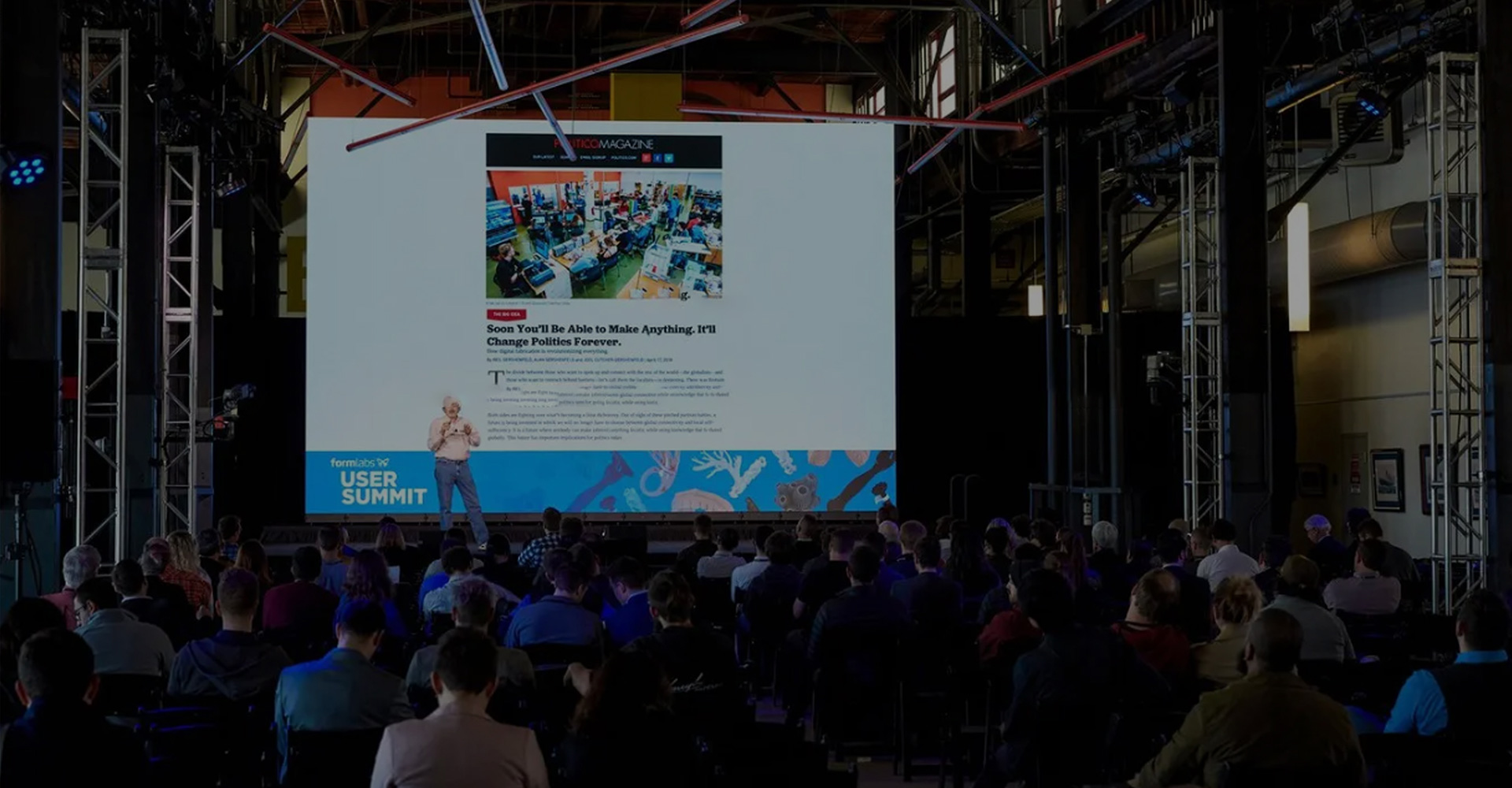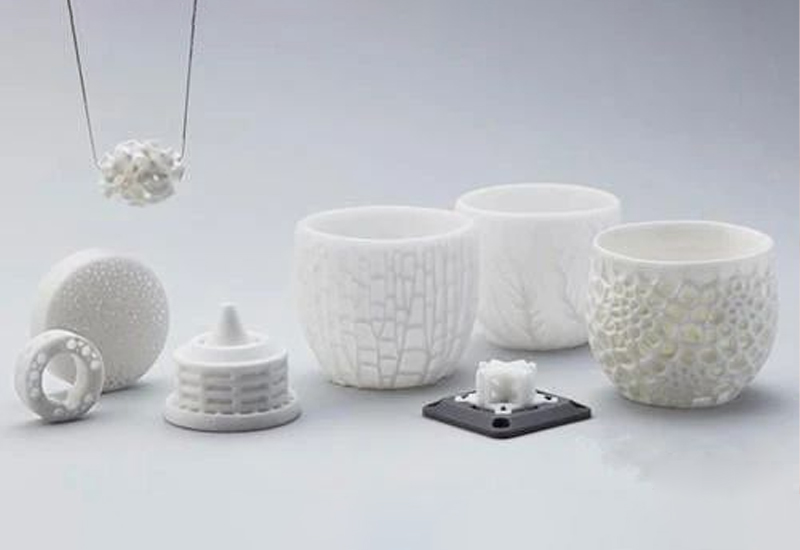
Now to share with you the principle of 3D printer optical curing molding technology (SLA), application range and advantages of 3D printer optical curing molding technology (SLA), some fans say that they still do not understand, today I will use the form of graphics and text to explain the 3D printer optical curing molding technology (SLA).
 Large SLA light curing 3D printer
Large SLA light curing 3D printerIntroduction to 3D printer optical curing molding technology (SLA)
SLA technology, known as Stereo lithography Appearance, is a laser focused on the surface of a photocured material, so that it is sequentially solidified from point to line, line to surface, and so on, so that layer upon layer to form a three-dimensional entity. SLA is the first commercialized and practical 3d printing technology, as well as the first patented technology of 3D printing. SLA stereoscopic light curing forming method was first developed in the late 1970s and early 1980s. After years of development, SLA light curing 3D printing technology is also the most mature technology at present.
SLA technology principle
The photocuring technology (SLA) is based on the polymerization principle of liquid photosensitive resin. It uses ultraviolet light or laser as the light source and converges the laser beam into a light spot of about 0.1mm. The laser beam is guided to scan in the XY plane by the motion of the reflective galvanometer. Liquid resins undergo rapid photopolymerization and change from liquid to solid when exposed to light (even though the photopolymer is cured by ultraviolet irradiation).
3D printer optical curing molding technology (SLA) production model process
3D printer optical curing molding technology (SLA) production of product models can be generally divided into four stages: pre-treatment, molding, cleaning and post-curing.
(1) Pre-processing stage: the main content is the data preparation work around the print model, including the conversion of CAD design model into STL file format, determination of placement orientation, application of support and slicing and other steps.
(2) photocuring molding stage: after the temperature of the photosensitive lipid raw material reaches the preset reasonable temperature, the machine lays a layer of liquid photosensitive resin in the molding room, and after it is swept up by the scraper, it is irradiated into the molding room by ultraviolet light and cured. Then, Chen put liquid photosensitive resin lifting table will drop a fraction of a millimeter, spread a new liquid photosensitive resin. The scraper continues to sweep the newly laid layer of liquid photosensitive resin, through which ultraviolet light will cure it with the previous layer of liquid photosensitive resin. This process continues until the 3D object is printed.
(3) Cleaning stage: The cleaning model is mainly to remove excess liquid resin, remove and trim the supporting structure of the prototype, and polish the step texture formed by layer curing.
(4) Post-curing stage: Put the cleaned model into the UV box for irradiation, and then carry out the final curing. After polishing, electroplating, painting or coloring treatment, the required product will be obtained.

SLA light curing 3D printer proofing products
Advantages and disadvantages of 3D printer optical curing Molding Technology (SLA) :
(1) Advantages: (1) Photocuring is the earliest rapid prototype manufacturing process, after the test of time, high technical maturity. ② The CAD digital model is made into prototype directly, the photosensitive reaction process is convenient, the molding speed is fast, the product production cycle is short, without cutting tools and molds. (3) The prototype precision is high, can process the structure and shape of complex or the use of traditional means is difficult to form the prototype and mold. ④ The surface quality is good, the top surface of the workpiece is very smooth, the side may have the uneven step and the curved surface between different levels. ⑤ Make CAD digital model intuitive, reduce the cost of error repair. ⑥ Provide samples for the experiment, which can verify and check the results of computer simulation. ⑦ can be operated online, can be controlled remotely, once the system starts to work, the whole process of building parts completely automatic operation, without special care, conducive to the automation of production.
(2) Disadvantages: ① The cost of SLA technology and equipment is relatively high, and the use and maintenance cost will also increase. ② The photosensitive resin used by SLA 3D printers has certain chemical composition, and the operators must have protective measures when using it, which requires harsh working environment. (3) Forming parts are mostly photosensitive resins, which are limited in strength, stiffness and heat resistance, and pollute the environment. They can not be compared with real manufactured products, which is not conducive to long-term preservation. (4) The core technology is monopolized by a few companies, and the technology and market potential are not fully tapped. ⑤ The pre-processing software and driver software have a large amount of computation, and the correlation is too high with the processing effect. ⑥ The software system is complicated and difficult to get started.

SLA technology light curing forming diagram
3D printer optical curing molding technology (SLA) application industry
In the current application of several rapid prototyping process methods, light curing molding is widely used in aviation, automobile, electrical appliances, consumer goods, medical and other industries because of its high degree of automation in the molding process, good quality of prototype surface, high dimensional precision and can realize relatively fine dimensional molding.
(1) Application of SLA technology in the aerospace field: In the aerospace field, SLA model can be directly used in wind tunnel test for manufacturability and assemblability test. A variety of shells can be made by using the photocuring molding technology, and then the wind tunnel test can be carried out directly after the sensor is installed. Through this method, the cost and time of making complex surface mold can be avoided, so that the optimal rectification scheme can be selected from various design schemes more quickly, and the verification cycle and development cost can be greatly shortened in the whole development process.
(2) Application of SLA technology in the footwear industry: In the field of footwear production, 3D printer optical curing molding technology (SLA) makes it possible for personalized design and small batch production of footwear products, making the production process more brief and flexible. The traditional design and manufacture of shoes have many complicated technological processes, and can not meet the complex structure of porous mesh. Therefore, many shoe industry leaders aim at the value brought by the 3D printing industry have introduced 3D printing equipment for the research and development of 3D printing shoes, 3D printing shoes there are many advantages, you can go to see the specific Xiaobian last time to share: 3D printing in the field of footwear what advantages?
(3) Application of SLA technology in other manufacturing fields: In addition to its important application in the field of aerospace, photocuring rapid prototyping technology is also very important and widely applied in other manufacturing fields such as automobile, mold manufacturing, electrical appliances and casting. Take automobile manufacturing for example: Modern automobile production is characterized by multiple models and short cycle times. In order to meet different production needs, we need to constantly change the model. For the parts with very complex shape and structure, part prototype can be made by light curing forming technology, so as to verify the design idea of the designer, and the part prototype can be used for functional and assembly testing. In the automobile industry, the optical curing molding technology can also be combined with reverse engineering technology and rapid mold manufacturing technology, which can be used for automobile body design, front and rear bumper assembly trial production, interior door panel and other structural samples, functional samples trial production, racing car parts production, etc.
Well, here is the introduction of 3D printer optical curing molding technology (SLA). Acme3d is a professional 3D printer R&D and manufacturer at home and abroad, focusing on the development and comprehensive application of 3D printing technology. For more technical knowledge of 3D industry and to discuss the development of 3D industry, please pay attention to us.
+86 19958086067
sales@3dacme.com